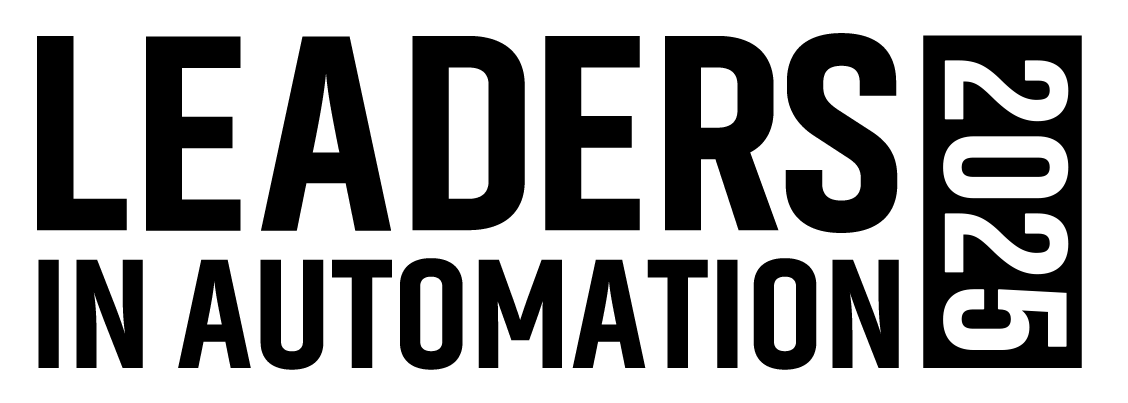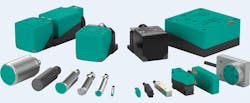Inductive Sensors: Non-Contact Metal Detection for All Industries
Key Highlights
- Inductive sensors operate through electromagnetic fields generated by copper coils, with the coil size directly determining sensing range and accuracy for metal object detection.
- Each sensor is assigned a unique serial number for complete traceability and quality control.
- Industrial-grade sensors maintain full functionality across extreme temperature ranges (-40°C to 85°C) and feature encapsulated housings to protect internal components from liquid, shock and vibration damage.
Inductive sensors, which first appeared in 1958, are widely used in factory automation for non-contact detection of metal objects. They are found in discrete manufacturing environments such as automotive production, packaging equipment and robotics, as well as in process plants. Regardless of industry application, these sensors help improve machine efficiency, accuracy and safety.
The key application for inductive sensors involves the detection of metal. When metal objects enter the sensing field, inductive sensors provide part-presence information through digital, analog or distance outputs.
Historically, these sensors were primarily used in industrial automation, where they were used to detect stamped parts in presses or to confirm the presence of the car frame and bracketry in robotic welding cells. However, their applications have expanded into other fields.
In the amusement park industry, inductive sensors verify that a coaster car’s lap bar is securely locked. They also monitor the ride’s car movement to control braking systems, ensuring riders come to a safe, smooth stop.
In agriculture, they are used to confirm foot pedal engagement or to ensure that a harvester chute is fully opened.
With such diverse applications spanning multiple industries, millions of these sensors are installed every year.
Inductive sensor design
An inductive sensor consists of three key components — a coil, oscillator and output stage.
- The coil is located at the tip of the sensor (inside the green cap in the main image at the top of this article) and is comprised of a thin copper wire wound around a bobbin. As electric current passes through the wire, a metal-sensing electromagnetic field is generated. The coil’s diameter size determines the sensing range. The larger the coil, the longer the range. The coil rests inside a ferrite core which shapes the magnetic field into a focused, conical form.
Will manufacturers soon be able to configure sensors to exact customer specifications on demand? Could parameters such as housing size, sensing range, switching frequency and output type be selected from a defined set of options and delivered within a short production window?
- The oscillator sends an alternating current through the coil, creating the sensing field. When a metal target enters this field, the added load dampens the oscillator’s amplitude, triggering the output.
- The output stage communicates target presence/absence to the system controller. DC models use a PNP or NPN transistor, while thyristors switch AC loads. If continuous position feedback is required, analog voltage and current types are available.
An industrial-grade sensor, even when used in commercial applications, must provide stable performance across a wide temperature range. For example, an 18 mm sensor with a rated operating distance of 8 mm must maintain full functionality over ambient temperatures ranging from -40°C to +85°C (-40°F to +185°F).
An inductive sensor’s housing is fully encapsulated. This filling not only prevents liquid ingress but also protects the internal components from shock and vibration.
The designs of these components can be adapted to a variety of industries and environments. For example, in mobile equipment installations, the sensor cables must be compatible with various mobile-grade connectors, and the electronics need to withstand the potentially damaging electrical transients common in battery-powered systems.
Traditional inductive sensor production
While inductive sensors rely on a simple design with few components, their production process is more involved than basic assembly and shipping. Each sensor needs to meet a specific sensing range tolerance, which cannot be achieved using off-the-shelf board-level components. Therefore, each sensor has to be manually adjusted to reach the desired sensing range.
An industrial-grade sensor, even when used in commercial applications, must provide stable performance across a wide temperature range. For example, an 18 mm sensor with a rated operating distance of 8 mm must maintain full functionality over ambient temperatures ranging from -40°C to +85°C (-40°F to +185°F).
To achieve the correct tolerance, sensors are partially assembled, encapsulated and placed in a fixture where the sensing range is measured. If the range is incorrect, resistance components are adjusted using techniques such as laser trimming. Only after the sensor achieved the correct sensing distances can it proceed with the rest of the production process.
The only aspects of sensor production that are automated are the pick-and-place operation of the components and the coil winding. Every other part of the sensor’s production, including component assembly, epoxy filling, resistance trimming, wiring and final testing is performed manually.
New designs and production techniques
Modern design and production techniques have considerably improved the traditional inductive sensor’s manufacturing process. While laser trimming is still used for many special designs, it is not required for basic models. These designs can now be fully assembled and encapsulated before testing and digital calibration.
In the final production step, the sensor undergoes programming. Here, it is placed in an automated test fixture where its sensing range is digitally calibrated. Calibrating the sensor after it is fully assembled ensures that each unit has identical performance. This streamlined “assemble, encapsulate, program” process significantly speeds up production and reduces costs.
Each sensor is also assigned a unique serial number at the start of production. This number makes it possible to trace the components used, production time and digital calibration settings. If an issue ever arises, every material and production step can be reviewed to identify the cause and take corrective action.
Inductive sensors in the digital era
Digitalization has now reached even the most basic components of automation, including inductive sensors. Advances in production technologies now make it possible to develop sensor variants in a matter of weeks or months, rather than the years it once required.
Looking ahead, this progress raises important questions: Will manufacturers soon be able to configure sensors to exact customer specifications on demand? Could parameters such as housing size, sensing range, switching frequency and output type be selected from a defined set of options and delivered within a short production window?
Exactly when this level of customization will become reality is still uncertain, but current trends suggest it may happen sooner rather than later.
Tim Cicerchi is technical services manager at Pepperl+Fuchs.
About the Author

Tim Cicerchi
Over my 27 years at Pepperl+Fuchs, I have had the opportunity to hold several roles, including Lead Product Manager, Technical Support Engineer and Field Application Engineer. After graduating from Cleveland State University with a degree in Electrical Engineering, I quickly discovered my passion for industrial automation. Moving through various positions at Pepperl+Fuchs allowed me to work closely with development, product management and quality teams. These experiences ultimately led me to my current role as the leader of Technical Services and the Smart Systems Group. Today, I manage a team of 12 and support our entire sales organization and all customers with their technical needs.

Leaders relevant to this article:


